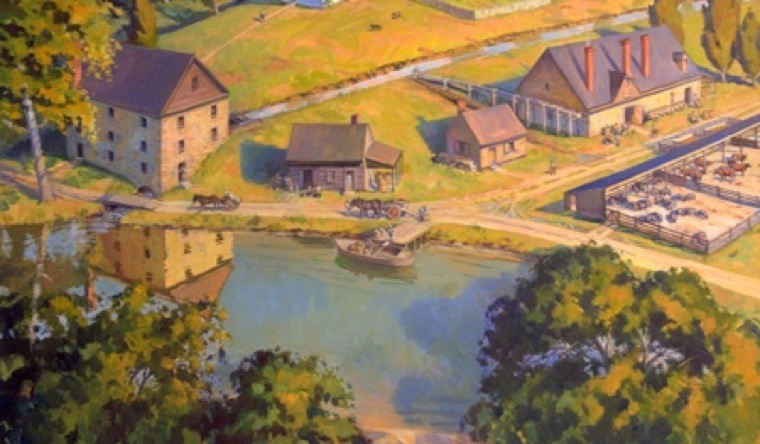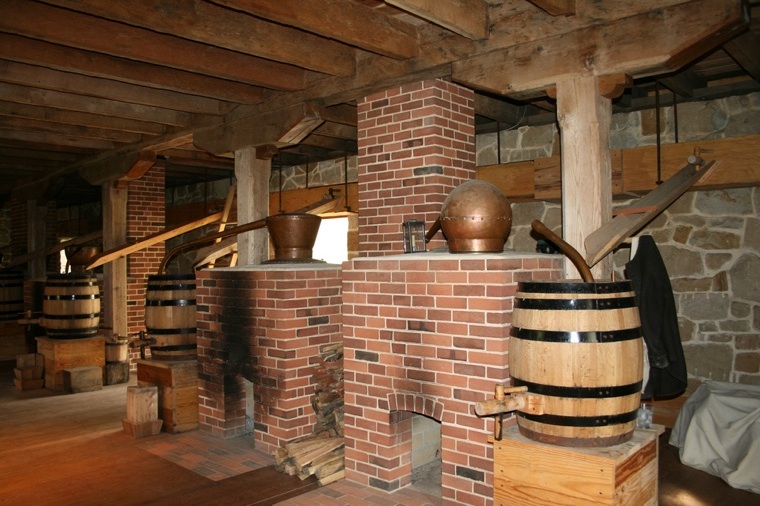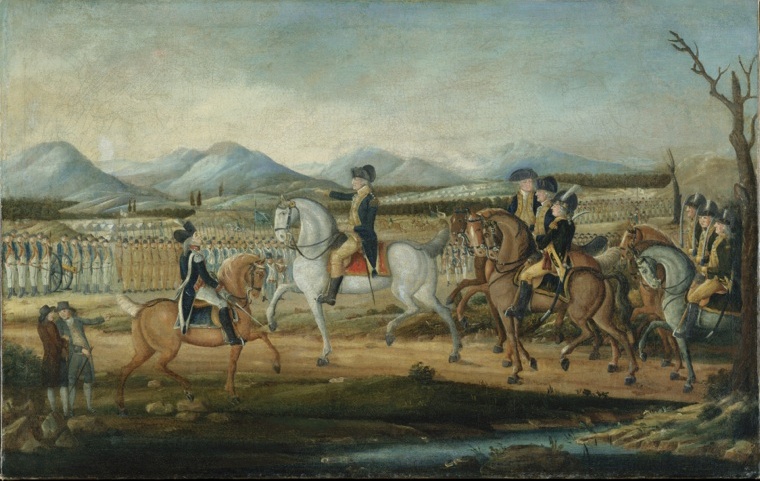(Note: This is an annual feature we run on George Washington’s birthday.) It’s appropriate that we take time to honor George Washington’s role in founding what is among the most successful startups in history, the United States of America. It is also worth noting that when not fathering a country, Washington was an active investor in other startups ranging from canals (a bust) to a distillery (a huge win). To help celebrate this Monday holiday Americans traditionally call President’s Day , here are ten amazing facts surrounding Washington’s role as a founding father of America’s Distilled Spirits industry.
1 | George Washington was the only founding father to start and operate a distillery.

(Photo: MountVernon.org)
Despite many of the nation’s founders being planters and large land owners, Washington was the only one to start a commercial distillery.
2 | George Washington didn’t start his distillery until he was 65 years old.

Washington in 1797, age 65, approximately when the distillery was open. (Portrait: WikiMedia Commons)
At this time in Washington’s life, as his second and final term as President was coming to an end, he was actively trying to simplify his farming operations and reduce his expansive land holdings. Always keen to enterprises that might earn him extra income, Washington was intrigued by the profit potential that a distillery might bring in.
3 | Before launching his distillery, Washington had no personal experience distilling.
While he had no background in distilling, Washington was always open to innovative and creative farming practices of the day. He decided to invest in a distillery at the urging of his Scottish farm manager, James Anderson, who had experience distilling grain in Scotland and Virginia. In what we’d call today a “startup pitch,” Anderson convinced Washington that Mount Vernon’s crops, combined with its large commercial gristmill and the abundant water supply, would make the distillery a profitable venture.
4 | Within a year, Washington’s distillery became one of largest in the country.

The Mount Vernon Distillery and Gristmill as it would have appeared in 1799. (via: MountVernon.org)
In 1799, two years after he launched it, Washington’s distillery produced almost 11,000 gallons of whiskey. By comparison, the average Virginia distillery produced 650 gallons of whiskey per year. While there were thousands of distilleries at the time Washington started his distillery, the great majority of these were in small out-buildings about 800-square feet in size, with one still that produced a few hundred gallons of spirits during one month of operation. By comparison, Washington’s distillery measured 75 x 30 feet (2,250 square feet) operated five copper pot stills for 12 months a year.
5 | Like most successful startups, timing played a key role in the success of Washington’s distillery.
Until the 1790s, rum was the American drink of choice. Starting in the 1790s, tastes began to shift to whiskey, prompting a boom in distilling.
6 | His distillery was part of a larger plan by Washington that included the freeing of his slaves.
Washington, a slave-holder until his death, nevertheless was the only major planter among the seven founding fathers to emancipate his slaves. The distillery was part of his effort to diversify his operations and create non-farming revenue streams. By moving away from labor-intensive activities, Washington hoped to clear the path to freeing the more than 300 slaves who worked on his widespread land. While his will designated their emancipation upon the death of his wife, Martha, she freed them sooner, 12 months after his death.
7 | Washington’s whiskey was very different from today’s whiskey.

(Photo: David Barrett via Flickr)
Unlike the requirements of the distillation process of whiskey today, Washington was able to streamline production and distribution of his product because it was not bottled, branded, or aged. It was sold by the barrel to merchants and nearby planters.
8 | As President, George Washington signed into law a federal tax (and led a military campaign to enforce its collection) that would make him one of the nation’s most-taxed business owners.

George Washington and his troops near Fort Cumberland, Maryland, before their march to suppress the Whiskey Rebellion in western Pennsylvania. (via: WikiMedia Commons)
Not only did Washington sign the tax into law, he led a militia of 12,000 into western Pennsylvania to put down an insurrection now known as the Whiskey Rebellion and, in doing, established the right of the federal government to tax its population.
9 | Washington’s distillery lacked the succession planning necessary to keep it operational.
George Washington’s death in 1799 halted the brief success of the distillery. Sold soon after his death by an heir, within a decade, the building fell into disrepair and many of the stones were taken away to use in local construction projects.
10 | Mount Vernon has reconstructed a working distillery on the spot where it originally existed.
While the distillery building burned in 1814, knowledge of the operation was preserved in Washington’s writings. The land on which the building stood is owned today by the Commonwealth of Virginia. The organization that manages Washington’s home and plantation, the Mount Vernon Ladies’ Association, entered an agreement with the state to restore and manage the park in 1995. The site of the Distillery was excavated by Mount Vernon’s archaeologists between 1999 and 2006 and reconstruction began in 2005 and was completed in 2007. Learn more about tours of Mt. Vernon and the distillery on MountVernon.org. The association even sells limited batches of whiskey each year.
(Information for this post came from three sources: The book, Founding Spirits: George Washington and the Beginnings of the American Whiskey Industry, by Dr. Dennis Pogue, a historian and archaeologist who worked on the excavation and reconstruction of Washington’s Mount Vernon distillery; the paper, “A Pretty Considerable Distillery: Excavating George Washington’s Whiskey Distillery” by Eleanor Breen, assistant archaeologist and Esther C. White, director of archaeology at Mount Vernon; and the informative website of the Mount Vernon Ladies Association, the non-profit organization that preserves and maintains Mount Vernon.)
(Originally published on SmallBusiness.com on February 15, 2014)
